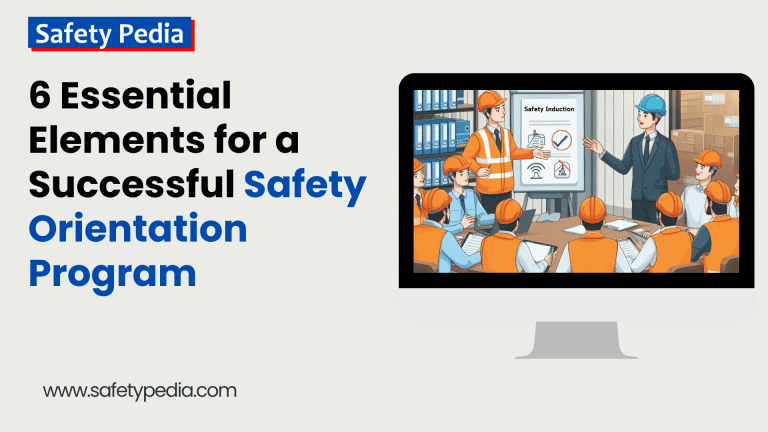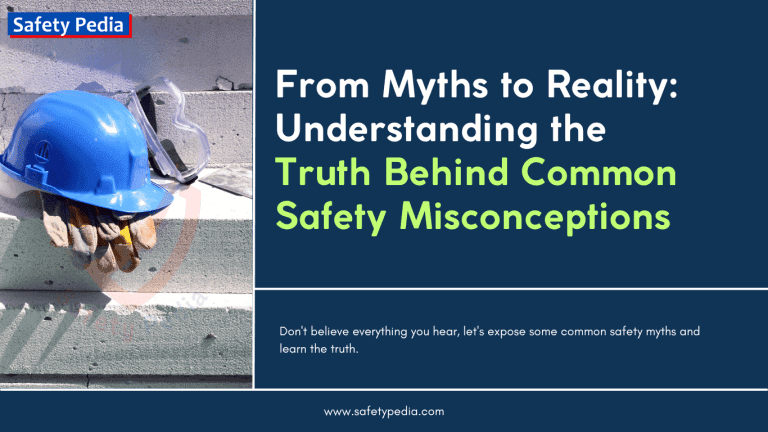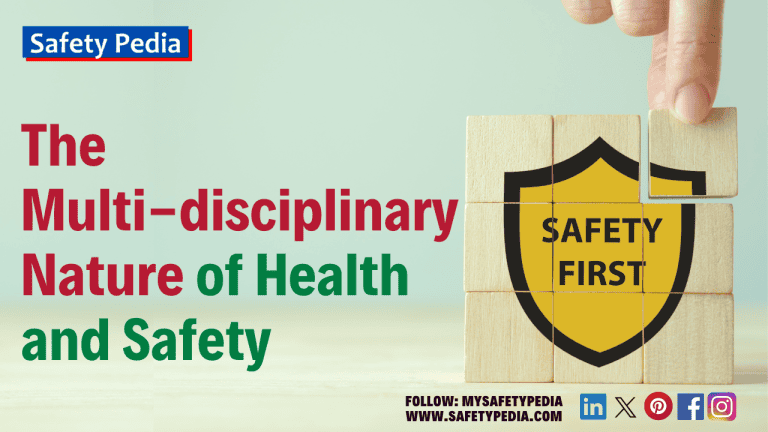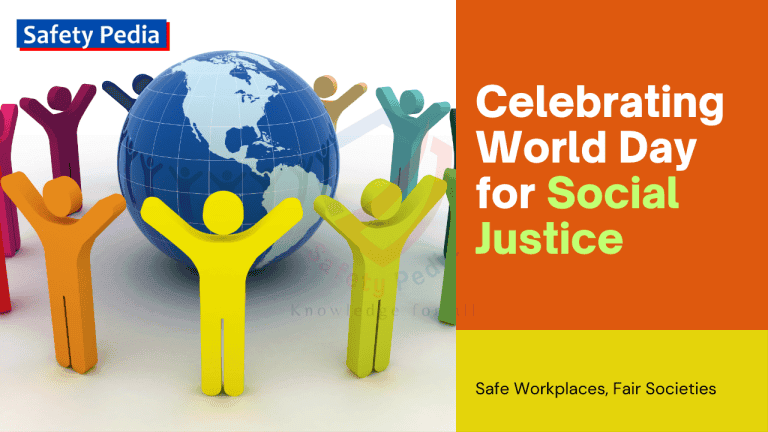
Introduction
In today’s rapidly evolving corporate landscape, workplace bullying has emerged as a widespread problem that undermines employee morale, hampers productivity, and damages a company’s reputation. To foster a healthy work environment, it is imperative for organizations to implement effective strategies that put a stop to this detrimental behavior. By addressing workplace bullying head-on, companies can create a space where employees feel safe, supported, and empowered to thrive.
In this article, we will explore a range of strategies and techniques that can be employed to tackle workplace bullying. From fostering a culture of respect and open communication to implementing formal reporting systems, we’ll delve into practical solutions that promote a positive and inclusive workplace. Additionally, we’ll discuss the critical role that leaders and managers play in preventing and addressing bullying incidents.
By adopting these actionable strategies, organizations can cultivate a work culture that not only eradicates bullying but also encourages collaboration, innovation, and employee well-being. Join us in the quest for a healthier work environment, where every employee can reach their full potential without the fear of bullying.
Understanding workplace bullying
Workplace bullying refers to any repeated, unwanted behavior that is intended to intimidate, humiliate, or harm an individual or a group of employees. It can take various forms, including verbal abuse, threats, sabotage, exclusion, and even physical violence. The impact of workplace bullying goes beyond the immediate victims, affecting the entire organization. The negative consequences range from decreased employee satisfaction and engagement to increased turnover rates and legal liabilities.
The impact of workplace bullying on individuals and organizations
Workplace bullying has severe consequences for both individuals and organizations. For the victims, it can lead to significant emotional distress, anxiety, depression, and even physical health issues. The constant fear and stress associated with bullying can hinder their ability to perform their job effectively and negatively impact their overall well-being.
On an organizational level, workplace bullying contributes to a toxic work environment where trust and collaboration are compromised. It creates a culture of fear and secrecy, hindering open communication and innovation. Moreover, the negative publicity surrounding workplace bullying incidents can tarnish a company’s reputation and make it less attractive to potential employees and clients.
Signs of workplace bullying
Recognizing the signs of workplace bullying is crucial to addressing the issue effectively. Some common indicators include:
- Persistent and unwarranted criticism or belittling of an individual’s work.
- Isolation or exclusion from team activities and decision-making processes.
- Spreading rumors or gossip about a colleague.
- Physical intimidation or threats.
- Excessive monitoring or micromanagement.
- Undermining or sabotaging a colleague’s work.
Symptoms of Workplace bullying
Bullying can have a profound impact on a person’s physical and mental health. Here are some common symptoms associated with bullying:
Physical Symptoms
- Headaches: Frequent or severe headaches can be a sign of stress and anxiety related to bullying.
- Stomachaches: Digestive issues, such as stomachaches or nausea, can also be linked to bullying-induced stress.
- Sleep disturbances: Difficulty falling asleep, frequent waking, or nightmares can disrupt sleep patterns.
- Changes in appetite: Increased or decreased appetite can be a symptom of emotional distress.
- Physical injuries: In cases of physical bullying, victims may experience bruises, cuts, or other injuries.
Psychological Symptoms
- Anxiety: Bullying can lead to feelings of anxiety, fear, and nervousness.
- Depression: Victims may experience symptoms of depression, including sadness, hopelessness, and withdrawal.
- Low self-esteem: Bullying can damage a person’s self-worth and confidence.
- Social withdrawal: Victims may avoid social situations and isolate themselves from others.
- Suicidal thoughts: In severe cases, bullying can lead to suicidal thoughts or attempts.
It can be difficult to recognize the signs of bullying, especially if you’re directly experiencing it. If you or someone you know is showing signs of distress, it’s important to reach out for help. Remember, you don’t have to face this alone.
Being vigilant and observant of these signs and symptoms can help identify bullying incidents early on and take appropriate action.
Case Studies of workplace bullying
Case Study 1: The Target of Verbal Abuse
Scenario: David, a diligent and dedicated employee at a manufacturing plant, had always taken pride in his work. He enjoyed collaborating with his team and contributing to the company’s success. However, things took a turn for the worse when his new supervisor, Tom, joined the organization. Tom’s management style was abrasive, and David soon became his primary target.
At first, Tom’s behavior was subtle—comments about minor mistakes, occasional sarcastic remarks about David’s pace or methods. But over time, the abuse escalated. Tom began making derogatory comments about David’s appearance, calling him “lazy-looking” and mocking his age. In team meetings, Tom would single him out, publicly questioning his competence and belittling his suggestions. Even in private conversations, Tom’s insults turned personal, ridiculing David’s family background and insinuating that he was unfit for his job.
David started noticing the effects almost immediately. Initially, he dismissed the insults, hoping they were a passing phase, but the constant criticism began to take a toll. He dreaded coming to work each morning, and by the time he arrived, he often felt nauseous and tense. During lunch breaks, David found himself avoiding the cafeteria to escape Tom’s gaze, opting instead to eat alone in his car.
At home, the stress spilled over into his personal life. David’s usual upbeat demeanor faded, and he became irritable with his family. His sleep was restless, plagued by nightmares of confrontations with Tom, leaving him exhausted and unfocused at work. Physical symptoms also emerged: frequent headaches, an upset stomach, and episodes of dizziness that he had never experienced before.
Impacts:
- Psychological Trauma:
- David began experiencing anxiety every time he entered the workplace. He felt a persistent sense of dread, which sometimes led to panic attacks.
- His confidence eroded, and he doubted his abilities, questioning whether he deserved the job he had once excelled in.
- Physical Health Issues:
- The stress manifested physically as chronic headaches and stomach problems, with his doctor diagnosing stress-induced gastritis.
- Insomnia became a constant battle, leaving him physically and mentally drained.
- Reduced Job Satisfaction and Productivity:
- David no longer found joy in his work and avoided taking initiative, fearing further criticism from Tom.
- His performance dropped, not because of incompetence but because of the mental toll the abuse had taken.
- Strained Personal Relationships:
- The constant stress affected his relationship with his spouse and children, who felt the brunt of his frustration and emotional withdrawal.
Outcome:
Eventually, David reached a breaking point and confided in a trusted colleague, who encouraged him to report Tom’s behavior to HR. The company initiated an investigation, during which other employees also shared similar experiences with Tom. As a result, Tom was terminated for violating the company’s anti-bullying policy.
David was offered counseling services to help him recover from the trauma. The company also introduced stricter anti-bullying measures, including training for supervisors and employees, ensuring a safer and more respectful workplace culture.
Key Impacts from the Case Study:
- Psychological Impact: Severe anxiety, eroded confidence, and early signs of depression.
- Physical Symptoms: Chronic headaches, insomnia, and stress-induced health problems.
- Professional Impact: Decline in job performance and loss of job satisfaction.
- Personal Impact: Strain on family relationships and reduced quality of life.
This case highlights the profound effects of verbal abuse in the workplace and the importance of timely intervention to protect employees’ mental and physical well-being.
Case Study 2: The Targeted Minority
Scenario: Aisha, a talented marketing professional, had always been proud of her cultural identity and her achievements at work. As a Muslim woman wearing a hijab, she understood she might stand out in the predominantly white company, but she believed her work ethic and professionalism would earn her respect.
At first, her colleagues seemed polite, but subtle signs of bias began to surface. During meetings, her ideas were often dismissed or credited to others. Breakroom conversations occasionally veered into insensitive territory, with colleagues making ignorant jokes about her culture and religion. “Isn’t it hot under that thing?” a coworker asked one day, pointing to her hijab. Others laughed, leaving Aisha to force a strained smile and brush off the comment.
The jokes soon became more overt. During a team lunch, someone joked that Aisha couldn’t join because there wouldn’t be a halal option. Though framed as humor, the remark stung, especially since she had not even been invited. She often found out about social events only after they had happened, learning of them through casual chatter or photos posted on the company intranet.
The constant exclusion and microaggressions began to wear on Aisha. She felt a tightness in her chest every morning before heading to work, dreading what new comments or slights the day might bring. Her productivity started to decline as she found it difficult to focus during meetings where she felt unwelcome. Even simple tasks became challenging as her confidence eroded.
At home, Aisha’s demeanor changed. Normally cheerful and full of energy, she became withdrawn and quiet, often staring blankly at her computer or phone. She experienced frequent headaches, and her appetite diminished. Her evenings, once filled with activities and time with family, became periods of solitude as she tried to process the hurt and anger she felt but didn’t know how to express.
Impacts:
- Emotional Distress:
- Aisha experienced feelings of isolation, anger, and helplessness due to repeated discrimination.
- Anxiety plagued her daily, making her dread interactions with colleagues.
- Physical Symptoms:
- Stress-induced headaches and fatigue became a constant struggle.
- She experienced a loss of appetite and occasional insomnia.
- Reduced Job Satisfaction:
- The hostile environment made Aisha question her place in the company.
- Her enthusiasm for her role and belief in her contributions diminished.
- Decreased Productivity:
- Her inability to focus led to missed deadlines and errors she wouldn’t normally make.
- She withdrew from team discussions, limiting her professional input.
- Strain on Personal Life:
- Aisha’s relationship with friends and family suffered as she withdrew emotionally, feeling too exhausted to socialize.
Outcome:
After months of enduring this treatment, Aisha confided in a close friend outside of work, who encouraged her to document the incidents and approach HR. Aisha was hesitant but ultimately decided to file a formal complaint. The HR department launched an investigation, interviewing Aisha and her colleagues.
As a result, several employees were required to attend diversity and inclusion training, and the company implemented new policies to foster a more inclusive workplace culture. Aisha’s courage to speak up not only led to positive changes in her work environment but also inspired others in the company to share their experiences and address similar issues.
Key Impacts from the Case Study:
- Emotional Impact: Increased isolation, anxiety, and a sense of exclusion.
- Physical Symptoms: Headaches, fatigue, and insomnia due to prolonged stress.
- Professional Impact: Reduced engagement, diminished confidence, and decreased performance.
- Personal Impact: Strained relationships with loved ones and loss of personal joy.
This case underscores the damaging effects of workplace discrimination and highlights the importance of proactive measures to promote diversity, equity, and inclusion. A supportive and respectful workplace benefits both employees and the organization.
Case Study 3: The Overworked Employee
Scenario: Mark had always been known as the go-to person at his company. A skilled and reliable employee, he prided himself on his ability to tackle complex projects and consistently exceed expectations. His reputation for excellence, however, had an unintended consequence: it made him a target for workplace exploitation.
His manager, Lisa, frequently praised Mark for his dedication—but her compliments often came with a catch. “You’re the only one I can trust with this,” she’d say while handing him yet another project with an impossible deadline. At first, Mark felt flattered by the responsibility, believing his hard work would lead to recognition or promotion. But over time, the workload became unmanageable.
Mark’s days started earlier and ended later, with weekends consumed by catching up on tasks. Despite his efforts, Lisa always seemed to find fault. “You’re slipping, Mark,” she’d comment after he stayed late to finish a report. When he finally mustered the courage to express his concerns, she dismissed him outright. “If you can’t handle the work, maybe this role isn’t for you,” Lisa said, accusing him of lacking team spirit.
The stress soon began to manifest physically. Mark experienced frequent headaches and muscle tension that wouldn’t go away. He struggled to sleep, lying awake at night replaying Lisa’s criticisms and worrying about unfinished tasks. His energy dwindled, and his once-positive attitude was replaced by irritability and despair.
At work, Mark felt a growing sense of dread every time his phone pinged with a new email. Even tasks he used to enjoy now felt like a burden. He withdrew from colleagues, avoiding the break room to prevent interactions that might lead to more assignments. The lack of appreciation and Lisa’s constant criticism left him feeling invisible, as though his efforts didn’t matter.
Impacts:
- Burnout:
- Mark began to experience emotional exhaustion and a sense of detachment from his work.
- He felt drained and unable to muster enthusiasm, even for tasks he once found fulfilling.
- Physical and Mental Health Issues:
- Chronic stress led to headaches, neck and shoulder pain, and a persistent feeling of fatigue.
- Mark developed anxiety and mild depression, finding it hard to concentrate or find joy in his personal life.
- Decreased Job Satisfaction:
- The constant pressure and lack of acknowledgment left Mark questioning his value at the company.
- His sense of pride and purpose in his work eroded, leading to thoughts of resignation.
- Strain on Personal Relationships:
- Mark became irritable and withdrawn at home, straining his relationships with family and friends.
- His lack of free time and constant preoccupation with work further distanced him from loved ones.
- Reduced Productivity:
- Despite his best efforts, Mark’s declining mental and physical health affected his performance.
- Errors began creeping into his work, and he struggled to meet deadlines.
Outcome:
After months of enduring this cycle, Mark reached a breaking point when he missed his child’s school play due to an unexpected assignment from Lisa. He decided to seek help and confided in a trusted HR representative, providing documentation of his workload and Lisa’s dismissive responses.
The company conducted an internal review and discovered that Lisa had a pattern of overburdening certain employees. She was required to undergo management training, and Mark’s workload was redistributed among the team. The company also implemented policies to monitor employee workloads and ensure managers provided adequate support.
Mark took time off to recover from burnout and began attending therapy sessions to rebuild his mental health. With the company’s intervention and ongoing support, he gradually regained his confidence and work-life balance.
Key Impacts from the Case Study:
- Emotional Impact: Severe burnout and reduced self-esteem due to overwork and lack of support.
- Physical Symptoms: Chronic headaches, fatigue, and sleep disturbances caused by stress.
- Professional Impact: Decreased job satisfaction and a temporary decline in productivity.
- Personal Impact: Strained relationships with family and a loss of personal time.
This case highlights the importance of recognizing and addressing overwork as a form of workplace bullying. Supportive management and fair workload distribution are essential for maintaining employee well-being and productivity.
Case Study 4: Intimidation and Excessive Monitoring
Background:
John had been a dedicated warehouse worker for over a decade, known for his reliability and efficiency. He took pride in his work and valued the camaraderie he shared with his coworkers. However, when a new supervisor, Kevin, was assigned to oversee the team, the atmosphere in the warehouse changed dramatically.
Kevin’s management style was marked by an intense need for control. He would frequently linger around John’s workstation, arms crossed, watching every move with a critical eye. At first, John assumed Kevin was simply getting to know the team, but it soon became clear that he was the primary focus of Kevin’s scrutiny. Kevin would stop by John’s area several times an hour, questioning his methods and timing, often in a condescending tone.
Situation:
Over time, Kevin’s behavior escalated. He began assigning John the most physically demanding tasks, like unloading heavy shipments, while giving easier assignments to other workers. On several occasions, Kevin publicly criticized John for minor mistakes, raising his voice in front of colleagues. “You’ve been here long enough to know better,” Kevin would snap, leaving John feeling humiliated.
The constant oversight and criticism began to affect John’s mental health. He noticed a growing sense of dread each morning before work. The thought of being watched so closely made him anxious, and his focus began to slip. At home, John struggled to relax. He often replayed Kevin’s harsh words in his mind, feeling powerless to change the situation. He started experiencing physical symptoms like tightness in his chest, frequent headaches, and trouble sleeping.
John’s confidence eroded, and his performance suffered. Tasks that once came easily now felt overwhelming. He avoided interacting with Kevin whenever possible, but the excessive monitoring and intimidation made it impossible to escape the stress.
Outcome:
Feeling trapped and unsupported, John decided to confide in his union representative. Encouraged by the union’s response, he formally reported Kevin’s behavior to HR, detailing the excessive monitoring, uneven workload distribution, and public belittlement.
HR launched an inquiry, gathering statements from John and his colleagues. It became clear that Kevin’s behavior was not only unwarranted but constituted workplace bullying. As a result, Kevin was required to attend mandatory management training focused on communication and leadership skills.
To ensure John’s well-being, he was reassigned to a different supervisor who provided a more supportive and respectful work environment. Over time, John regained his confidence and morale, returning to his previous level of productivity and once again enjoying his work.
Impacts:
- Emotional Distress:
- John experienced feelings of anxiety, helplessness, and humiliation due to Kevin’s controlling behavior.
- He began to doubt his abilities and felt isolated within the workplace.
- Physical Symptoms:
- Chronic stress led to headaches, chest tightness, and insomnia.
- Fatigue and muscle tension became constant companions.
- Decreased Job Performance:
- John’s focus and efficiency declined as a result of the ongoing stress.
- Tasks that were once routine became sources of frustration and error.
- Workplace Morale:
- Kevin’s behavior not only affected John but also created tension among coworkers who witnessed the mistreatment.
- Personal Life Impact:
- The stress from work spilled over into John’s personal life, leaving him emotionally distant and irritable with family and friends.
Key Impacts from the Case Study:
- Emotional Impact: Anxiety, loss of confidence, and feelings of humiliation.
- Physical Symptoms: Stress-induced health issues, including headaches and insomnia.
- Professional Impact: Decline in performance and productivity due to stress and demotivation.
- Personal Impact: Strain on personal relationships and reduced quality of life.
This case highlights the profound impact of workplace bullying and emphasizes the importance of addressing such behavior promptly. Supportive management and a respectful workplace culture are essential for employee well-being and organizational success.
Case Study 5: Cyberbullying and Gossip
Background:
Mia, a talented graphic designer, had always thrived in her creative work. As a remote employee at a fast-growing tech startup, she enjoyed the flexibility of working from home while collaborating with her team through online platforms. However, this virtual setup also became the stage for an unsettling and hurtful experience.
Eric, one of Mia’s teammates, initially came across as sarcastic but playful in group chats. He would occasionally comment on Mia’s work, saying things like, “Nice try, but are we sure this is client-ready?” The remarks seemed lighthearted at first, and Mia brushed them off. But as weeks passed, Eric’s comments became more frequent and cutting, often calling her designs “amateurish” or “uninspired” in front of the entire team.
Situation:
The problem escalated when Mia started noticing changes in how her colleagues interacted with her. Conversations that were once warm and supportive became curt and distant. Eventually, Mia discovered through a friendly coworker that Eric had been spreading rumors about her in private messages. He had labeled her as “lazy” and “incompetent,” despite her consistent track record of meeting deadlines and producing quality work.
The rumors didn’t stay private for long. Eric began making veiled references to her supposed shortcomings in group chats, fueling gossip among the team. Mia felt humiliated and betrayed, especially as the group chats were her primary way of staying connected in the remote work environment.
Her symptoms of stress began to mount. Mia found herself hesitating before joining team calls, dreading the possibility of further ridicule. Her sleep patterns disrupted, she often lay awake replaying Eric’s words, wondering if others believed the false narrative he had spun about her. She started second-guessing her own abilities, and her creativity—a cornerstone of her career—suffered as a result.
Even in the safety of her home, Mia couldn’t escape the anxiety and sense of isolation caused by Eric’s actions. She began avoiding team chats and withdrawing from social interactions, which only made her feel more alone.
Outcome:
Desperate for relief, Mia decided to document the instances of cyberbullying. She compiled screenshots of Eric’s targeted comments and rumors and reported the matter to HR. To her relief, HR took her complaint seriously and launched an investigation.
The evidence corroborated Mia’s claims, and Eric was issued a formal warning. Additionally, the company took proactive steps to address the issue:
- They revised their remote work policies to include clear guidelines on respectful communication.
- Mandatory training sessions were introduced to educate employees on cyberbullying and its impact, emphasizing the importance of professionalism in online interactions.
- HR established an anonymous reporting system for employees to report similar issues in the future.
With these measures in place, Mia began to feel supported and reassured. Over time, she regained her confidence and re-engaged with her team, rebuilding trust with her colleagues.
Impacts:
- Emotional Distress:
- Mia experienced feelings of betrayal, humiliation, and anxiety due to the gossip and targeted remarks.
- Her self-esteem took a significant hit, leaving her doubting her abilities.
- Physical Symptoms:
- The stress led to disrupted sleep patterns and chronic fatigue.
- She experienced frequent tension headaches and difficulty concentrating.
- Decreased Job Satisfaction:
- The toxic environment caused Mia to feel disconnected from her team and her work.
- She began questioning whether she wanted to stay with the company.
- Reduced Productivity:
- Mia’s creativity and efficiency were hindered as she became preoccupied with the bullying.
- She avoided team discussions, which limited her ability to collaborate effectively.
- Personal Life Impact:
- The stress spilled into her personal life, making her irritable and withdrawn from friends and family.
Key Impacts from the Case Study:
- Emotional Impact: Anxiety, low self-esteem, and a loss of trust in colleagues.
- Physical Symptoms: Stress-induced sleep issues and headaches.
- Professional Impact: Decline in creativity and reduced engagement with team activities.
- Personal Impact: Increased isolation and strain on personal relationships.
This case emphasizes the unique challenges of addressing workplace bullying in a remote setting. It highlights the importance of proactive policies, clear communication guidelines, and robust support systems to ensure employees feel safe and valued, even in virtual environments.
Legal implications of workplace bullying
Apart from the ethical and moral obligations, organizations must also be aware of the legal implications of workplace bullying. Depending on the jurisdiction, victims may have legal rights to seek compensation for the harm caused by bullying. Additionally, failing to address workplace bullying can result in legal action against the organization, leading to significant financial and reputational damage.
- Legal Definition: Workplace bullying is defined as repeated, intentional, and harmful behaviors directed at an employee or a group of employees, creating a hostile work environment.
- Employer Liability: Employers can face significant liabilities for unaddressed bullying, including claims of negligent hiring or supervision, potentially resulting in punitive damages.
- Relevant Laws: The Occupational Safety and Health Act (OSHA) and laws like the Minnesota Human Rights Act mandate a safe work environment free from bullying.
- Prevention Strategies: Employers are responsible for establishing clear anti-bullying policies, providing training, and creating effective reporting mechanisms.
- Harassment Policies: The U.S. Equal Employment Opportunity Commission outlines that harassment, a form of employment discrimination, can include behaviors that are considered bullying.
- Legal Action: While there are no specific state or federal laws prohibiting workplace bullying, such behaviors may overlap with harassment, allowing for legal action.
- Cultural Factors: Organizational culture and communication styles significantly influence the dynamics of workplace bullying, affecting the legal context.
- Reporting Procedures: Employees are encouraged to report bullying to management early to prevent escalation and to use established grievance processes.
- Training and Awareness: Anti-harassment training for managers and employees is crucial in preventing workplace bullying and fostering a respectful work environment.
- Legal Support: Resources for legal support and guidance on workplace bullying are available for both employers and employees seeking to understand their rights and responsibilities.
Developing a zero-tolerance policy against workplace bullying
One of the most effective ways to combat workplace bullying is to establish a zero-tolerance policy that clearly defines bullying behaviour and outlines the consequences of engaging in such behaviour. The policy should be communicated to all employees regularly to ensure its visibility and enforceability. Additionally, the policy should encourage employees to report any instances of bullying without fear of retaliation.

How can I document workplace bullying incidents?
- Start a Detailed Log: Create a log to record each bullying incident. Include dates, times, places, and a detailed description of what occurred, along with the names of any witnesses.
- Gather Evidence: Collect any relevant emails, messages, documents, or other forms of communication that provide evidence of the bullying behaviour.
- Witness Statements: If there are witnesses to the incidents, ask them to provide statements or accounts of what they observed.
- Photographic Evidence: If applicable, take photographs of any physical evidence of bullying, such as damage to personal property.
- Keep Records Safe: Store your log and all evidence in a safe and secure place where the bully cannot access it.
- Use Official Forms: If your workplace has official forms or systems for reporting bullying, use them to document the incidents formally.
- Follow Company Procedure: Adhere to your company’s established procedures for reporting and documenting bullying incidents. For guidance, consult your employee handbook or HR department.
- Seek Support: Consider discussing the situation with a trusted colleague, supervisor, or HR representative who can provide guidance on how to proceed.
- Legal Advice: If the bullying continues or escalates, seek legal advice to understand your rights and the next steps you can take.
Creating a healthy work environment through education and training
Education and training play a vital role in preventing workplace bullying. Organizations can create a culture of respect and inclusivity by raising awareness about the impact of bullying and providing employees with the knowledge and skills to identify and address such behaviour. Training programs should focus on fostering empathy, effective communication, conflict resolution, and assertiveness skills, equipping employees with the tools they need to handle bullying situations proactively.
Encouraging open communication and reporting mechanisms
An open communication channel is essential for employees to report bullying incidents safely and confidently. This can be achieved through anonymous reporting systems, regular team meetings, and one-on-one discussions with managers. By encouraging open dialogue, organizations can address bullying incidents promptly and effectively. It is crucial for employees to feel supported and confident that their concerns will be taken seriously and acted upon.
Dealing with workplace bullying incidents effectively
When a bullying incident is reported, handling it swiftly and impartially is essential. A thorough investigation should be conducted to gather facts and evidence, ensuring that all parties involved are heard. If the bullying allegations are substantiated, appropriate disciplinary actions should be taken, ranging from counselling and training to suspension or termination, depending on the severity of the behaviour. Communicating the investigation outcomes to the involved parties is crucial, emphasizing that bullying behaviour will not be tolerated.
Supporting victims of workplace bullying
Supporting workplace bullying victims is crucial for their recovery and well-being. Organizations should offer counselling services, either internally or through external resources, to help victims cope with the emotional distress caused by bullying. Additionally, providing opportunities for victims to rebuild their confidence and skills through training and development programs can aid their professional growth and resilience.
Creating a Healthy Work Environment Through Education and Training
One of the most effective ways to combat workplace bullying is by proactively educating employees about its detrimental effects and promoting a culture of respect. By providing comprehensive training programs, organizations can raise awareness about workplace bullying and equip employees with the necessary skills to identify and address it.
1. Educating Employees About Workplace Bullying
Education is crucial in creating a healthy work environment. By conducting workshops and seminars on workplace bullying, organizations can ensure that employees understand what constitutes bullying behaviour and its impact on individuals and the workplace. Through interactive sessions and real-life examples, employees can better understand the issue and how to prevent it.
2. Promoting a Culture of Respect
Fostering a culture of respect is essential in preventing workplace bullying. Organizations should emphasize the importance of treating everyone with dignity and promoting inclusivity. This can be achieved by encouraging open dialogue, valuing diverse perspectives, and implementing policies reinforcing a respectful work environment. When employees feel respected and valued, they are less likely to engage in bullying behaviour.
3. Providing Training on Conflict Resolution and Emotional Intelligence
Equipping employees with conflict resolution and emotional intelligence skills can help prevent workplace bullying incidents. By teaching effective communication techniques and promoting empathy, organizations can empower employees to handle conflicts constructively. This training can also help individuals develop the emotional resilience to navigate difficult situations and manage their emotions effectively.
Encouraging Open Communication and Reporting Mechanisms
Establishing open communication channels and effective reporting mechanisms is crucial in tackling workplace bullying. When employees feel comfortable reporting incidents and expressing their concerns, organizations can swiftly address the issue and take appropriate action.
1. Creating Safe Spaces for Open Communication
Organizations should emphasize the importance of open communication and create safe spaces where employees can freely express their concerns. This can be achieved through regular team meetings, anonymous suggestion boxes, or designated HR representatives trained in handling workplace bullying cases. By actively encouraging dialogue, organizations can gather valuable insights and address issues before they escalate.
2. Implementing Anonymous Reporting Systems
Organizations should establish anonymous reporting systems to ensure that employees feel safe reporting incidents. These systems allow individuals to report bullying behaviour without fear of retaliation. By guaranteeing confidentiality and providing multiple reporting channels, such as online platforms or dedicated helplines, organizations can encourage more employees to come forward and seek help.
3. Taking Prompt and Decisive Action
When workplace bullying incidents are reported, organizations must respond promptly and take decisive action. This involves conducting thorough investigations, involving relevant stakeholders, and implementing appropriate consequences for the perpetrators. By demonstrating that workplace bullying will not be tolerated, organizations communicate that such behaviour is unacceptable and will be punished.
Dealing with Workplace Bullying Incidents Effectively
When workplace bullying incidents occur, organizations must handle them effectively to protect the well-being of all employees involved. Organizations can create a safer and more inclusive work environment by following a structured approach and providing support to both victims and perpetrators.
1. Conducting Objective Investigations
Objective investigations are crucial in understanding the details of bullying incidents and gathering evidence. Organizations should designate trained individuals, such as HR professionals or external consultants, to conduct fair and unbiased investigations. Organizations can make informed decisions based on facts by interviewing all parties involved and collecting relevant information.
2. Providing Support to Victims
Supporting victims of workplace bullying is essential for their well-being and recovery. Organizations should offer counselling services, both internal and external, to help victims cope with the emotional and psychological impact. Additionally, managers and leaders should provide ongoing support and reassurance to victims, ensuring they feel protected and valued within the organization.
3. Addressing the Behavior of Perpetrators
While supporting victims is crucial, addressing the behaviour of perpetrators is equally essential. Organizations should provide counselling or training to individuals engaging in bullying to help them understand the impact of their actions and change their behaviour. Organizations can facilitate positive change and prevent future incidents by holding individuals accountable and providing them with the necessary resources for personal growth.
Supporting Victims of Workplace Bullying
Supporting victims of workplace bullying goes beyond providing immediate assistance. Organizations should implement long-term measures to ensure the well-being and reintegration of victims into the workplace.
1. Creating a Supportive Network
Organizations should establish support networks or employee resource groups where victims can connect with others who have experienced similar situations. These networks provide a safe space for victims to share their stories, seek advice, and receive emotional support. By fostering a sense of community, organizations help victims regain their confidence and rebuild their professional lives.
2. Offering Professional Development Opportunities
Organizations should provide training and development opportunities to aid victims in their professional growth and career advancement. This may include mentorship programs, skill-building workshops, or access to resources that help victims enhance their skills and rebuild their confidence. By investing in their professional development, organizations demonstrate their commitment to supporting victims in their journey towards recovery.
3. Monitoring and Evaluating Progress
Organizations should continuously monitor and evaluate their efforts to combat workplace bullying. This includes conducting regular surveys, seeking employee feedback, and analyzing data related to bullying incidents. By tracking progress and identifying areas for improvement, organizations can refine their strategies and create a work environment that is truly free from bullying.
What should I do if my supervisor is the bully?
- Seek Support: Trust a colleague, mentor, or professional counsellor for emotional support and practical advice.
- Document Everything: Keep a detailed record of all incidents, including dates, times, and witnesses, as well as any communications or actions taken by the supervisor.
- Understand the Bully: Try to understand the reasons behind your supervisor’s behaviour. This can sometimes provide insight into how to address the situation.
- Set Boundaries: Politely but firmly set boundaries with your supervisor. Let them know what behaviour is not acceptable to you.
- Use Internal Resources: Report the bullying to HR or another manager, primarily if it’s affecting your work or well-being.
- Legal Consultation: Consider seeking legal advice to understand your rights and your options in your jurisdiction.
- Plan for Safety: Identify “safe spots” or strategies to minimize your exposure to bullying situations.
- Professional Development: Engage in professional development opportunities that may open doors to transfer to another department or job role.
- External Support: Look for external support groups or networks for individuals who have experienced workplace bullying.
- Consider Escalation: If the situation does not improve, escalate the issue to higher management or external authorities.
How can I address the issue without jeopardizing my job?
- Professional Approach: Address the issue professionally by documenting the incidents and approaching your supervisor calmly and rationally, presenting the facts without displaying aggression or emotion.
- Internal Solutions: First, seek resolution through internal channels, such as speaking with your supervisor or HR, to give the company an opportunity to address the issue internally.
- Clear Communication: Communicate the impact of bullying on your work and well-being, using specific examples to illustrate how it affects your job performance.
- Policy Review: Review your company’s policies on workplace behaviour and ensure that your actions align with these guidelines when addressing the issue.
- Legal Awareness: Be aware of your legal rights and the protections afforded under employment law, which may guide you on proceeding without risking your job.
- External Advice: If necessary, seek advice from external sources such as legal professionals, especially if the internal resolution process is ineffective.
- Support Network: If possible, build a support network within your organization to have allies who can corroborate your experiences and provide support.
- Discreet Reporting: Utilize discreet reporting mechanisms, if available, such as anonymous hotlines or suggestion boxes, to raise the issue without confrontation
- Professional Development: Continue to focus on your professional development and performance. Maintaining a strong work record can provide job security while addressing the issue.
- Plan B: Have a contingency plan, such as a job search or transfer request, in case the situation does not improve, and you must leave your current position.
How can I build resilience while dealing with workplace bullying?
- Prioritize Self-Care: To maintain your mental and physical health, engage in activities that promote well-being, such as exercise, hobbies, or spending time with loved ones.
- Seek Professional Support: Consider therapy or counselling to help process your experiences and develop coping strategies. Many employers offer Employee Assistance Programs (EAPs) that provide confidential services.
- Educate Yourself: Learn about workplace bullying, its effects, and strategies for response and recovery to empower yourself with knowledge.
- Develop Assertiveness: Practice assertive communication skills to confidently express your needs and boundaries without being aggressive.
- Build a Support Network: Connect with colleagues, friends, or support groups who understand your situation and can offer encouragement.
- Focus on Strengths: Identify and cultivate your personal and professional strengths, which can boost your confidence and resilience.
- Set Realistic Goals: Establish achievable goals to help you regain control and purpose in your work life.
- Maintain Perspective: Remind yourself that bullying does not reflect your worth and that you have the right to a respectful workplace.
- Practice Mindfulness: Incorporate mindfulness techniques into your daily routine to reduce stress and enhance emotional regulation.
- Plan for the Future: Develop a long-term career plan that may include additional training, networking, or exploring new job opportunities.
How can I address the emotional impact of workplace bullying?
- Acknowledge Your Feelings: Recognize and accept your emotions related to the bullying. It’s important to understand that your feelings are valid and deserve attention.
- Seek Professional Help: Don’t hesitate to seek support from a therapist or counsellor, significantly if the bullying is affecting your mental health. Many companies offer Employee Assistance Programs (EAPs) that provide free, confidential counselling services.
- Talk About It: Find a trusted colleague, friend, or family member to discuss the situation with. Sharing your experiences can be cathartic and can help you feel less isolated.
- Practice Self-Care: Engage in activities that reduce stress and improve your mood, such as exercise, meditation, or hobbies that you enjoy.
- Work-Life Balance: Balance work and personal life. Engage in activities that you enjoy and that take your mind off work-related stress.
- Educate Yourself: Learn about workplace bullying and its effects. Understanding the dynamics can empower you to take informed actions.
- Set Boundaries: Establish clear boundaries with the bully, if possible. Communicate these boundaries calmly and professionally.
- Document the Bullying: Keep a record of all incidents of bullying, which can serve as a means of processing the events and may be useful if you decide to take action.
- Develop Coping Strategies: Work with a professional to develop coping mechanisms that can help you deal with the emotional impact of bullying.
- Focus on What You Can Control: Concentrate on your work and personal growth. This can help shift your focus away from the bully and towards your own development.
- Plan for the Future: Consider your long-term career goals. Sometimes, planning an exit strategy can give you a sense of control and hope.
- Stay Connected: Maintain your social connections. Isolation can exacerbate the negative feelings associated with bullying.
- Consider Legal Options: If the bullying is severe and your employer is not addressing it, you may want to explore legal options to protect yourself.
Conclusion:
In conclusion, workplace bullying is a serious issue that demands immediate attention. By implementing the strategies discussed in this article, organizations can create a work culture that not only eradicates bullying but also encourages collaboration, innovation, and employee well-being. Together, we can put a stop to workplace bullying and pave the way for a healthier work environment where every employee can reach their full potential without the fear of bullying.
Workplace bullying is a pervasive issue that requires immediate attention. Organizations must take a proactive approach to address and prevent bullying behavior to create a healthy work environment. By implementing strategies such as developing zero-tolerance policies, providing education and training, encouraging open communication, and effectively dealing with bullying incidents, companies can foster a positive work culture where all employees can thrive without the fear of bullying. It is a collective responsibility to put a stop to workplace bullying and create a workplace that values respect, inclusivity, and employee well-being. Together, we can build a future where bullying has no place in the corporate world.
References
Join Our Safety Community!
Stay informed with the latest tips and insights on occupational health, safety, and the environment.






